
How to Use Simple FOC Shield: Examples, Pinouts, and Specs
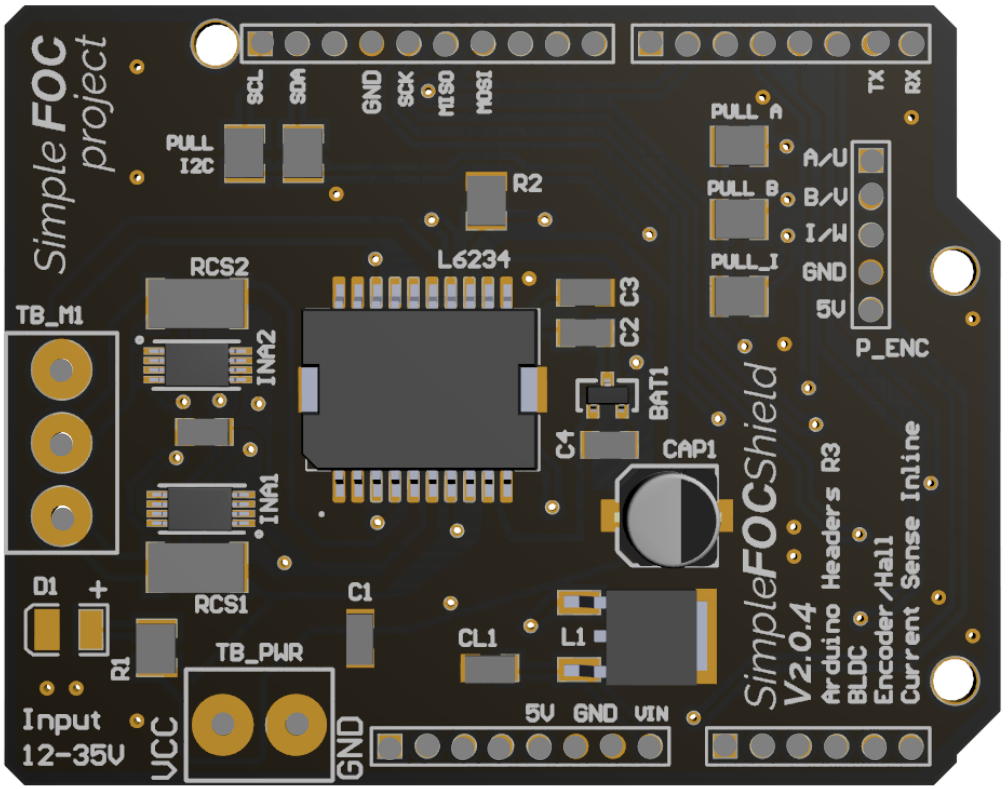
 Design with Simple FOC Shield in Cirkit Designer
Design with Simple FOC Shield in Cirkit DesignerIntroduction
The Simple Field Oriented Control (FOC) Shield is a versatile circuit board designed to drive brushless DC (BLDC) motors with high efficiency and precision. It leverages Field Oriented Control (FOC) algorithms to achieve smooth and accurate motor control, making it ideal for applications requiring precise motion, such as robotics, drones, and industrial automation.
This shield is compatible with popular microcontrollers, such as the Arduino UNO, and provides features like current sensing, PWM control, and communication interfaces for seamless integration. Its compact design and ease of use make it a popular choice for both hobbyists and professionals.
Explore Projects Built with Simple FOC Shield
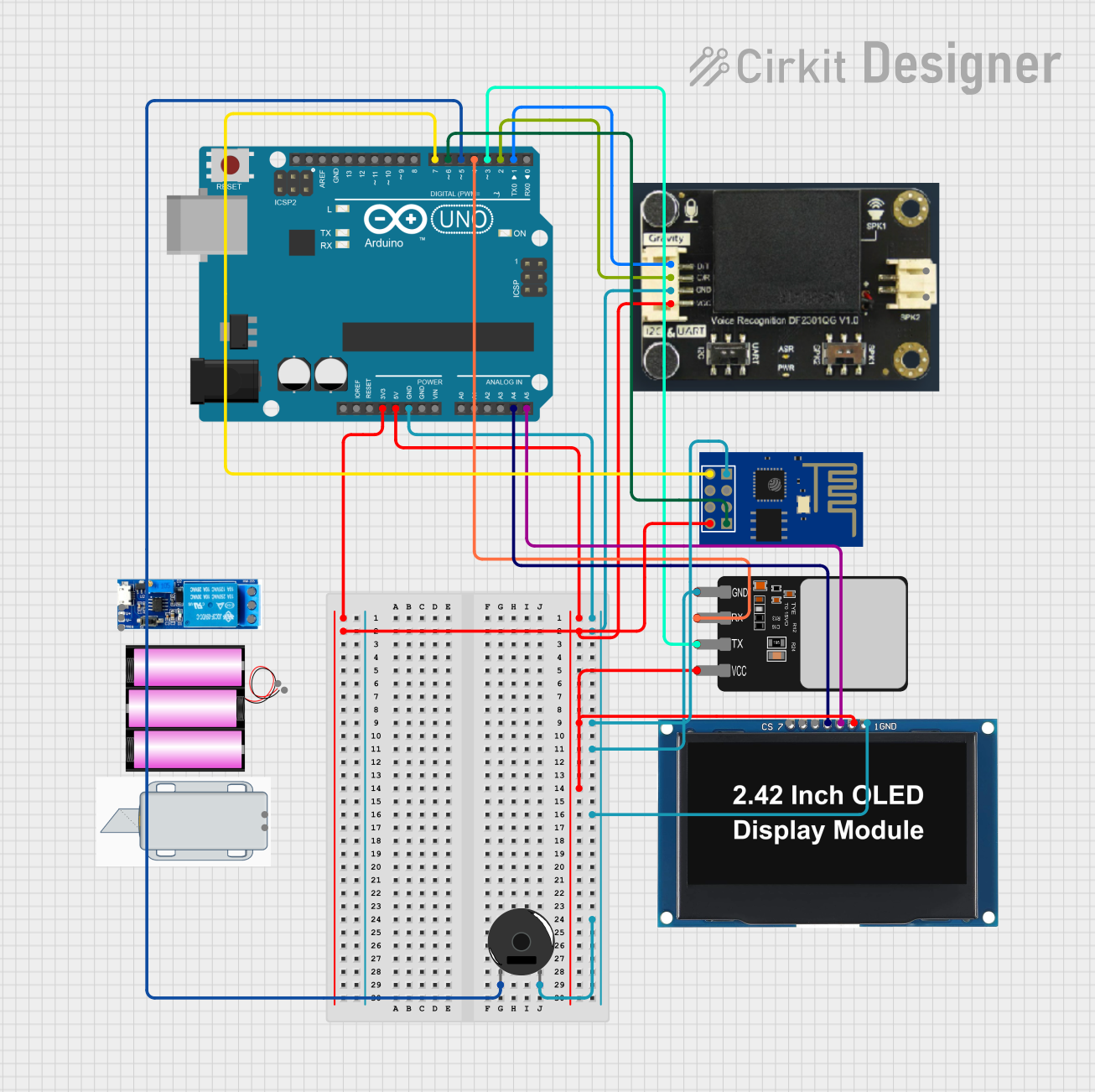
 Open Project in Cirkit Designer
Open Project in Cirkit Designer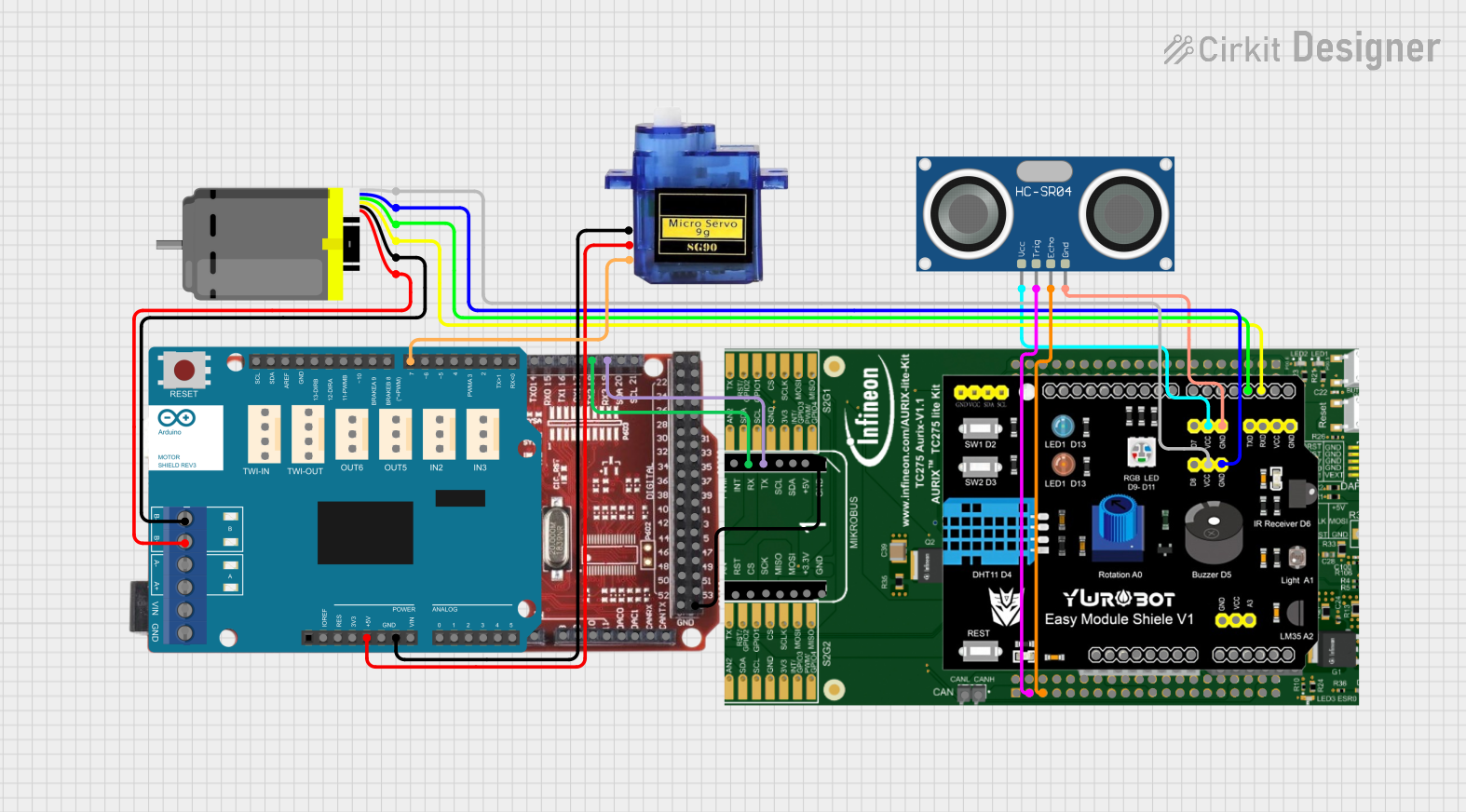
 Open Project in Cirkit Designer
Open Project in Cirkit Designer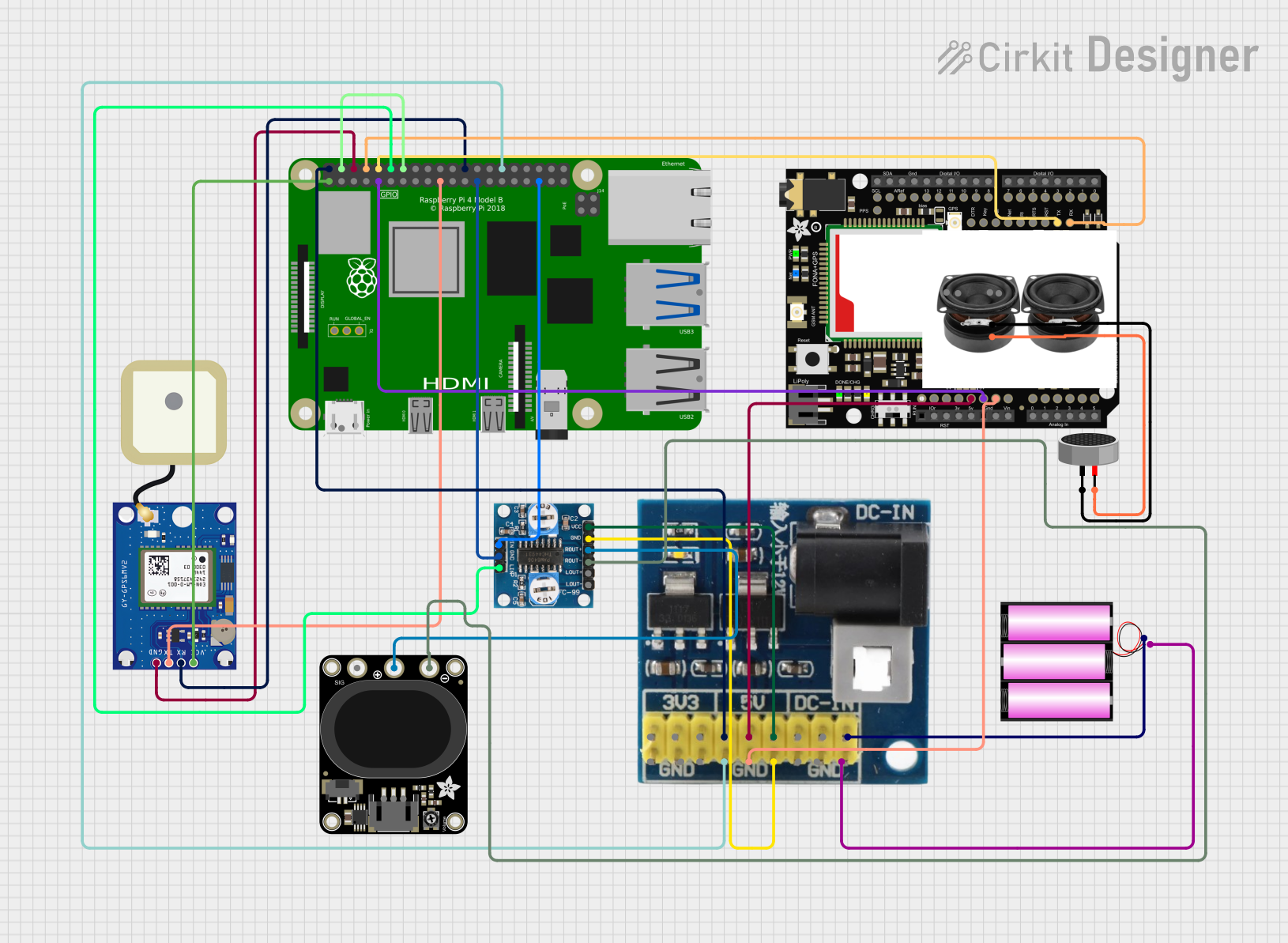
 Open Project in Cirkit Designer
Open Project in Cirkit Designer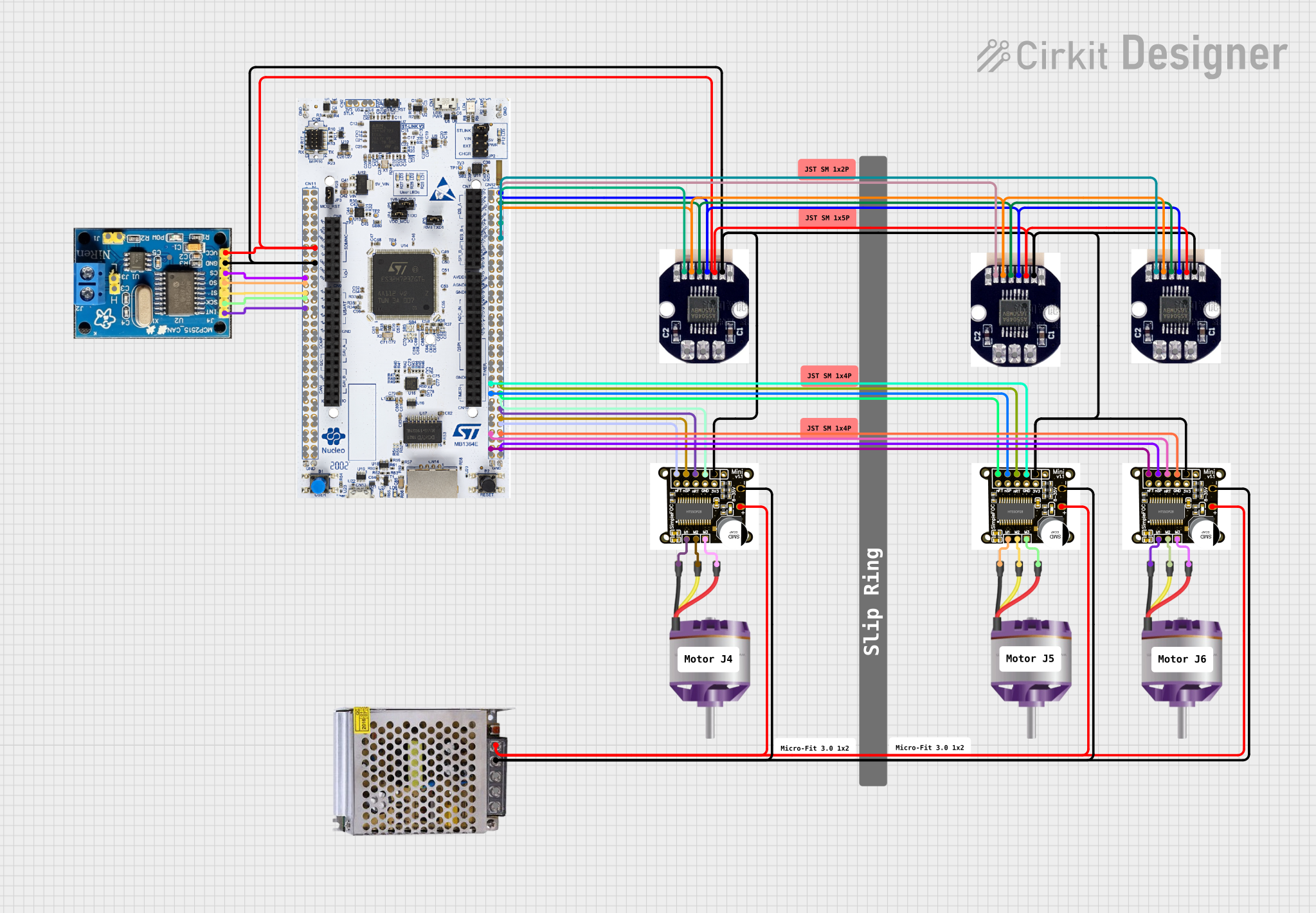
 Open Project in Cirkit Designer
Open Project in Cirkit DesignerExplore Projects Built with Simple FOC Shield

 Open Project in Cirkit Designer
Open Project in Cirkit Designer
 Open Project in Cirkit Designer
Open Project in Cirkit Designer
 Open Project in Cirkit Designer
Open Project in Cirkit Designer
 Open Project in Cirkit Designer
Open Project in Cirkit DesignerCommon Applications
- Robotics (e.g., robotic arms, mobile robots)
- Drones and UAVs
- Industrial automation systems
- Electric vehicles and e-bikes
- Precision motor control in research and development
Technical Specifications
The Simple FOC Shield is designed to work with a wide range of BLDC motors and microcontrollers. Below are its key technical details:
General Specifications
| Parameter | Value |
|---|---|
| Input Voltage Range | 6V to 24V |
| Maximum Current | 10A per motor phase |
| Supported Motors | 3-phase BLDC motors |
| Communication Interfaces | I2C, UART, SPI |
| PWM Frequency | Up to 20 kHz |
| Current Sensing | 2-phase inline sensing |
| Microcontroller Support | Arduino UNO, STM32, ESP32 |
Pin Configuration
The Simple FOC Shield features a standard pinout for easy connection to microcontrollers. Below is the pin configuration:
| Pin Name | Description |
|---|---|
| VIN | Input voltage (6V to 24V) |
| GND | Ground |
| PWM1 | PWM signal for motor phase 1 |
| PWM2 | PWM signal for motor phase 2 |
| PWM3 | PWM signal for motor phase 3 |
| CS1 | Current sense for motor phase 1 |
| CS2 | Current sense for motor phase 2 |
| EN | Enable pin to activate the motor driver |
| SDA | I2C data line |
| SCL | I2C clock line |
| TX | UART transmit |
| RX | UART receive |
Usage Instructions
How to Use the Simple FOC Shield
Connect the Shield to a Microcontroller:
- Mount the Simple FOC Shield onto an Arduino UNO or connect it to another compatible microcontroller using jumper wires.
- Ensure proper alignment of the pins to avoid damage.
Connect the BLDC Motor:
- Attach the three motor wires to the PWM1, PWM2, and PWM3 terminals on the shield.
- Secure the connections to prevent loose wiring during operation.
Power the Shield:
- Provide a DC power supply (6V to 24V) to the VIN and GND pins.
- Ensure the power supply can handle the current requirements of the motor.
Program the Microcontroller:
- Use a compatible library, such as the Arduino SimpleFOC library, to control the motor.
- Upload the code to the microcontroller to initialize and control the motor.
Test the Setup:
- Enable the motor driver by setting the EN pin high.
- Run the motor control code and verify smooth operation.
Important Considerations
- Current Sensing: Ensure the current sensing resistors are properly calibrated for accurate feedback.
- Heat Dissipation: Use a heatsink or active cooling if the shield operates at high currents for extended periods.
- Power Supply: Use a stable and adequately rated power supply to avoid voltage drops or overheating.
- Motor Compatibility: Verify that the motor's voltage and current ratings are within the shield's specifications.
Example Code for Arduino UNO
Below is an example of how to use the Simple FOC Shield with an Arduino UNO to control a BLDC motor:
#include <SimpleFOC.h> // Include the SimpleFOC library
// Define motor and driver objects
BLDCMotor motor = BLDCMotor(7); // Motor with 7 pole pairs
BLDCDriver3PWM driver = BLDCDriver3PWM(9, 10, 11); // PWM pins for motor phases
void setup() {
// Initialize the driver
driver.voltage_power_supply = 12; // Set power supply voltage
driver.init();
// Link the driver to the motor
motor.linkDriver(&driver);
// Set motor parameters
motor.voltage_limit = 6; // Limit motor voltage to 6V
motor.controller = ControlType::velocity; // Velocity control mode
// Initialize the motor
motor.init();
// Set initial target velocity
motor.target = 2; // Target velocity in rad/s
}
void loop() {
// Run the motor control loop
motor.loopFOC(); // Field Oriented Control algorithm
motor.move(); // Move the motor to the target velocity
}
Notes:
- Ensure the
SimpleFOClibrary is installed in your Arduino IDE. - Adjust the
voltage_power_supplyandtargetvalues based on your motor and application.
Troubleshooting and FAQs
Common Issues and Solutions
Motor Not Spinning:
- Verify all connections, especially the motor wires and power supply.
- Check if the EN pin is set high to enable the motor driver.
- Ensure the motor parameters (e.g., pole pairs) are correctly configured in the code.
Overheating:
- Use a heatsink or active cooling for the shield if it gets too hot.
- Reduce the motor's voltage or current limit in the code.
Erratic Motor Behavior:
- Check for loose connections or damaged wires.
- Ensure the current sensing resistors are properly calibrated.
- Verify the motor's specifications match the shield's capabilities.
Communication Issues:
- Ensure the correct communication protocol (I2C, UART, or SPI) is selected in the code.
- Check the wiring of the communication lines (SDA, SCL, TX, RX).
FAQs
Q: Can I use the Simple FOC Shield with a stepper motor?
A: No, the Simple FOC Shield is designed specifically for 3-phase BLDC motors. For stepper motors, use a dedicated stepper motor driver.
Q: What is the maximum motor speed supported?
A: The maximum speed depends on the motor's specifications and the PWM frequency. Ensure the motor's voltage and current ratings are not exceeded.
Q: Can I use a 5V power supply with the shield?
A: No, the minimum input voltage for the shield is 6V. Using a lower voltage may result in unstable operation or damage.
Q: Is the shield compatible with Raspberry Pi?
A: Yes, the shield can be used with Raspberry Pi, but additional wiring and configuration may be required to interface the GPIO pins.
By following this documentation, you can effectively use the Simple FOC Shield to control BLDC motors with precision and efficiency.